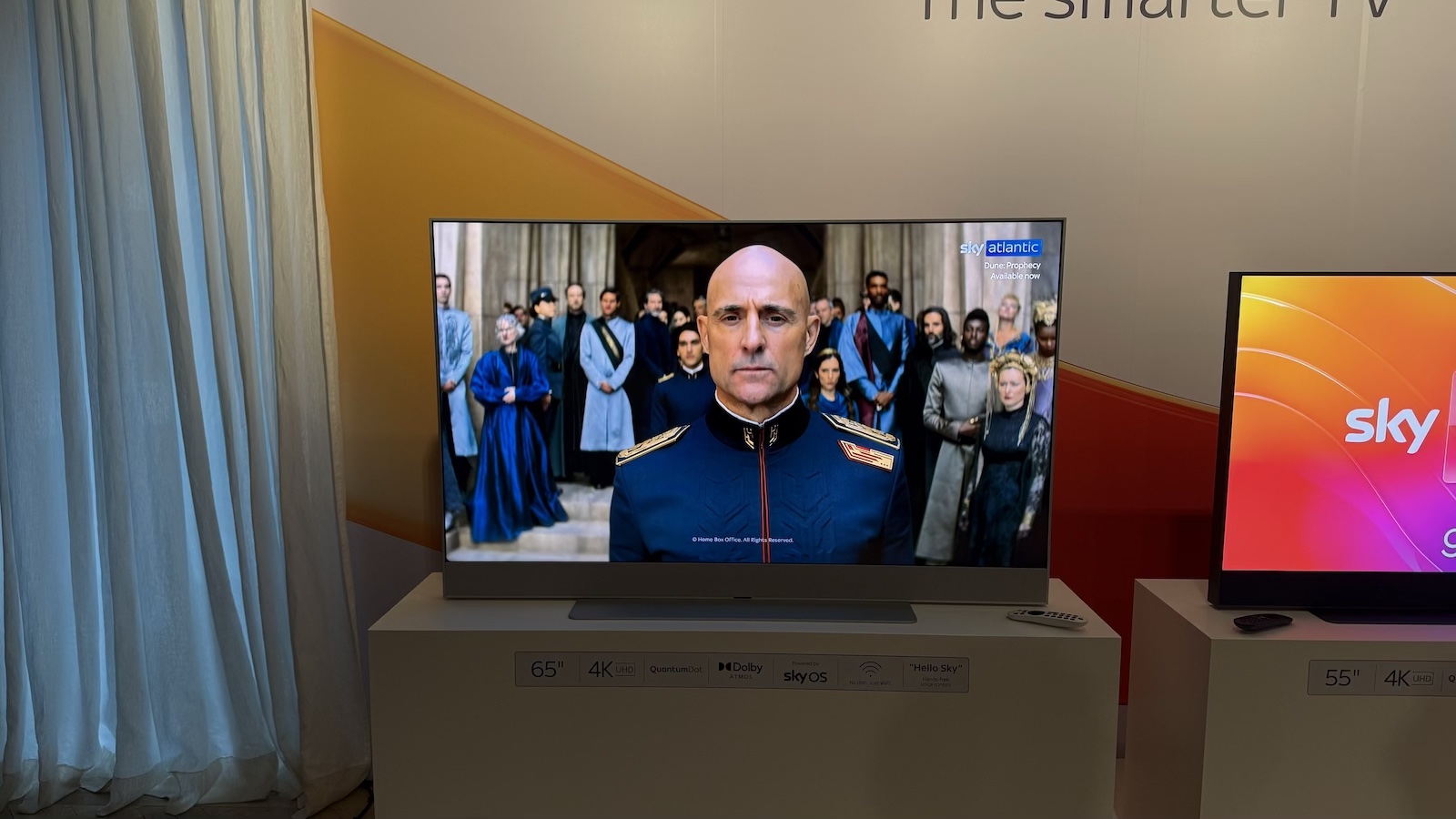Early Verdict
While our demo session raised questions that will only be answered once we've had the TV into our test rooms for a full review, Sky Glass Gen 2 has the potential to deliver much of what its predecessor promised but didn't quite deliver – but a lack of the latest panel and gaming technology will put the hardcore crowd off.
Pros
- +
Much brighter than previous model
- +
Improved design
- +
Same price and payment plan options
Cons
- -
Not OLED or even Mini LED
- -
No 4K/120Hz support
- -
Sky over internet still off the table for many
Why you can trust What Hi-Fi?
Sky has just taken the wraps off its second-generation Glass TV, which it has cunningly called Sky Glass Gen 2. The concept hasn’t changed – this is the full Sky TV service built into a TV that is designed to deliver content as it’s supposed to be seen and heard with little to no fuss for the end user – but the hardware has been upgraded.
Those upgrades are focused around a backlight with more LEDs and more local dimming zones for increased brightness and contrast, and a re-engineered soundbar component for clearer, weightier and more spacious sound.
Many will be disappointed by the lack of OLED or even Mini LED technology while others will bemoan the lack of 4K/120Hz gaming compatibility, but Sky is unapologetic about its approach, which is to pack the full Sky experience and really good picture and sound into a very affordable and attainable package. It’s all about balance – packing in useful upgrades while keeping the cost low.
While we will of course have to wait until we have a sample of Sky Glass Gen 2 in our test rooms for a full, comparative review before delivering anything approaching a final verdict, a brief demo session at the launch event has left me with the impression that this certainly is an upgrade on the old previous model in at least some ways.
Price and availability
Sky Glass Gen 2 is priced the same as the outgoing original model, which is £699 for the 43-inch version, £949 for the 55-inch version, and £1199 for the 65-inch model. So far, so simple.
But one of the most appealing aspects of Sky Glass has always been that the cost can be split, interest-free, over 24 or 48 months. Opt for the 48-month contract and you’re looking at £14 per month for the 43-inch Sky Glass Gen 2, £19 per month for the 55 incher and £24 per month for the 65-inch model (you also have to pay a £20 upfront fee with any of the pay-monthly options).
That only covers the cost of the hardware, though, and you will also need to subscribe to the Sky TV service to get the intended Sky Glass experience. Subscriptions now start at £15 per month but can quickly balloon to much higher figures once you start adding sport and/or movie channels. You still also have to pay an extra £6 per month if you want to add 4K and Dolby Atmos, which seems very steep.
Sky Glass Gen 2 will be available to order directly from Sky from 12th February 2025, and Currys will have it in stock by the end of the month.
Design
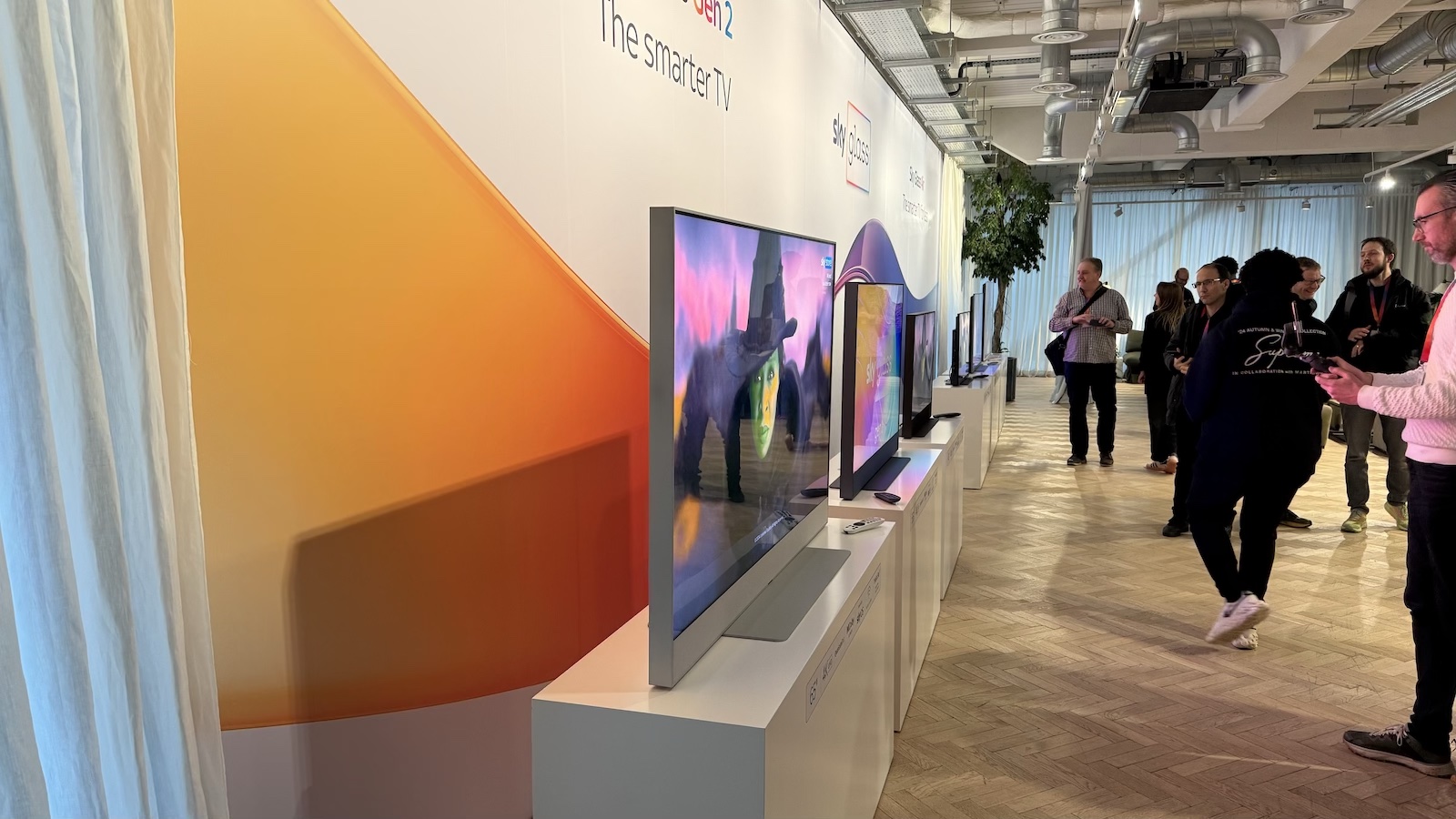
While Sky Glass Gen 2 has a broadly similar chunky, angular design to its predecessor, some sensible changes have been made. The first and most useful of these is the stand, which is now a low-profile little number that simply slots into the bottom of the chassis. The stand for the original Sky Glass was heavy, chunky, a pain in the backside to assemble and it gave the impression that the TV could swivel – which it could not – so this change is very welcome indeed.
The construction is aluminium, but the matte paintwork actually masks this in a way that seems surely unintentional. The number of finishes has been distilled to just three – Volcanic Grey, Arctic Silver or Atlantic Blue. Sky says that dark grey, silver and blue were the most popular colours for the original Sky Glass, which is why it has gone with those for the new model.
As before, the bottom couple of inches of the chassis are for a speaker bar that now contains two drivers that fire out diagonally from the ends, plus a centre speaker and upgraded subwoofer. There are also now two up-firing drivers mounted within the top edge of the set to boost Dolby Atmos delivery.
Features
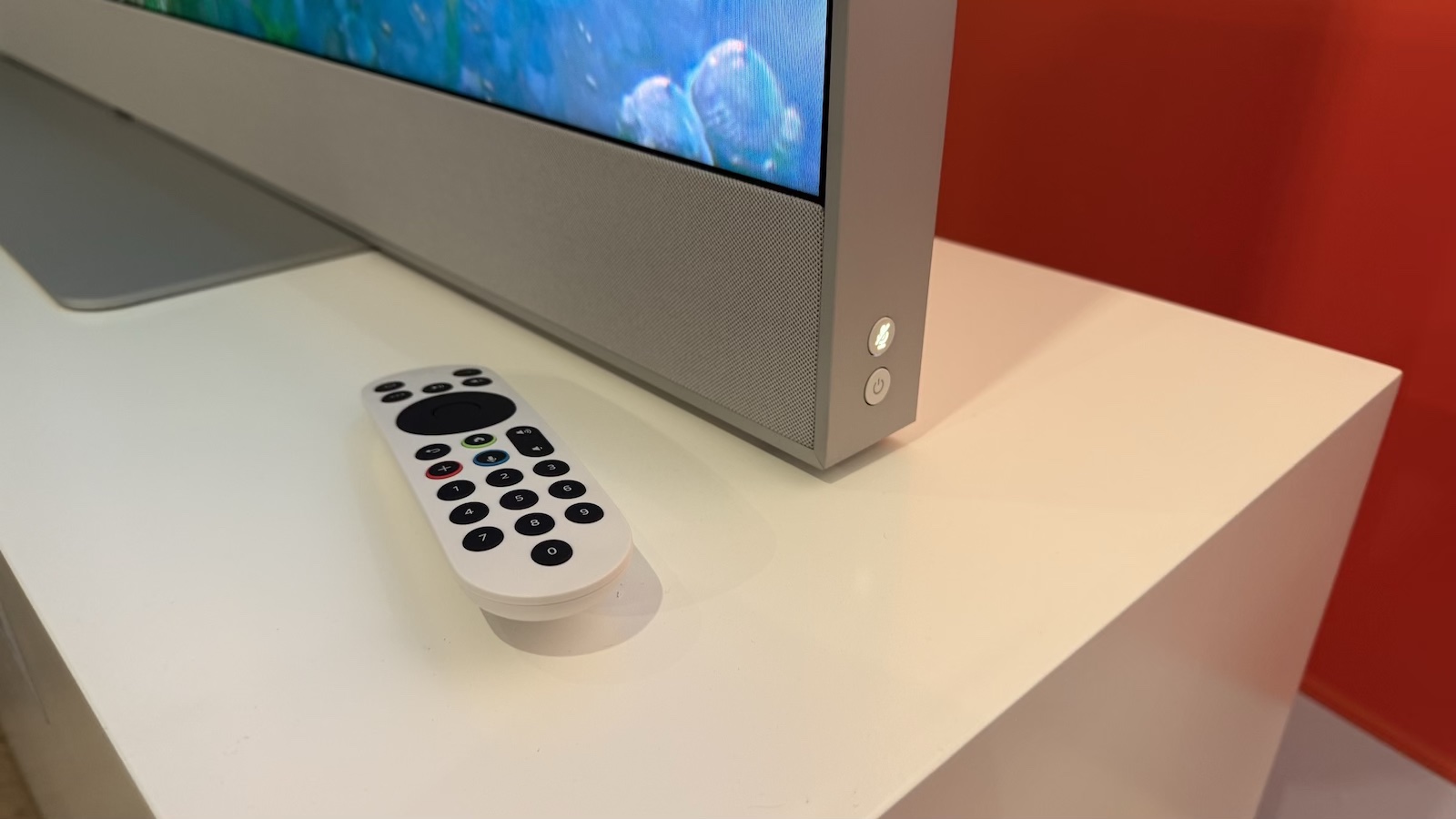
As before, this is a Quantum Dot TV with an LED backlight (what many brands refer to as ‘QLED’), but the number of LEDs and the number of dimming zones into which these LEDs are arranged have been increased. Sky says that the big improvements for Sky Glass Gen 2 are increased brightness, increased contrast, reduced blooming and far better viewing angles. All good stuff.
Like the previous model, Sky Glass Gen 2 has just three HDMI sockets, but that’s no great surprise when you consider the all-in-one nature of the TV. The only external source we can see many people looking to connect to a Sky Glass TV is a games console, and the TV does support ALLM, so the low input lag Game mode will be automatically selected when a gaming signal is detected.
Unfortunately, this is as far as the advanced gaming specs go – there is no support for 4K/120Hz (the TV has a 60Hz panel) or VRR. Again, this is perhaps to be expected given the price and intentions of the TV, but there’s no denying that it will be a deal-breaker for some potential buyers.
Of course, the real purpose of the Sky Glass TV is to deliver the full Sky TV experience in the simplest and most enjoyable way possible. Other than the tweaks and updates that have been made since Sky Glass first launched, this is the same Sky OS experience that many of us are now pretty used to – bright, sharp and fairly user-friendly once you’ve got used to its foibles. Sky OS is also very strong on content discovery, app integration and voice control (the TV has far-field microphones built-in).
Picture
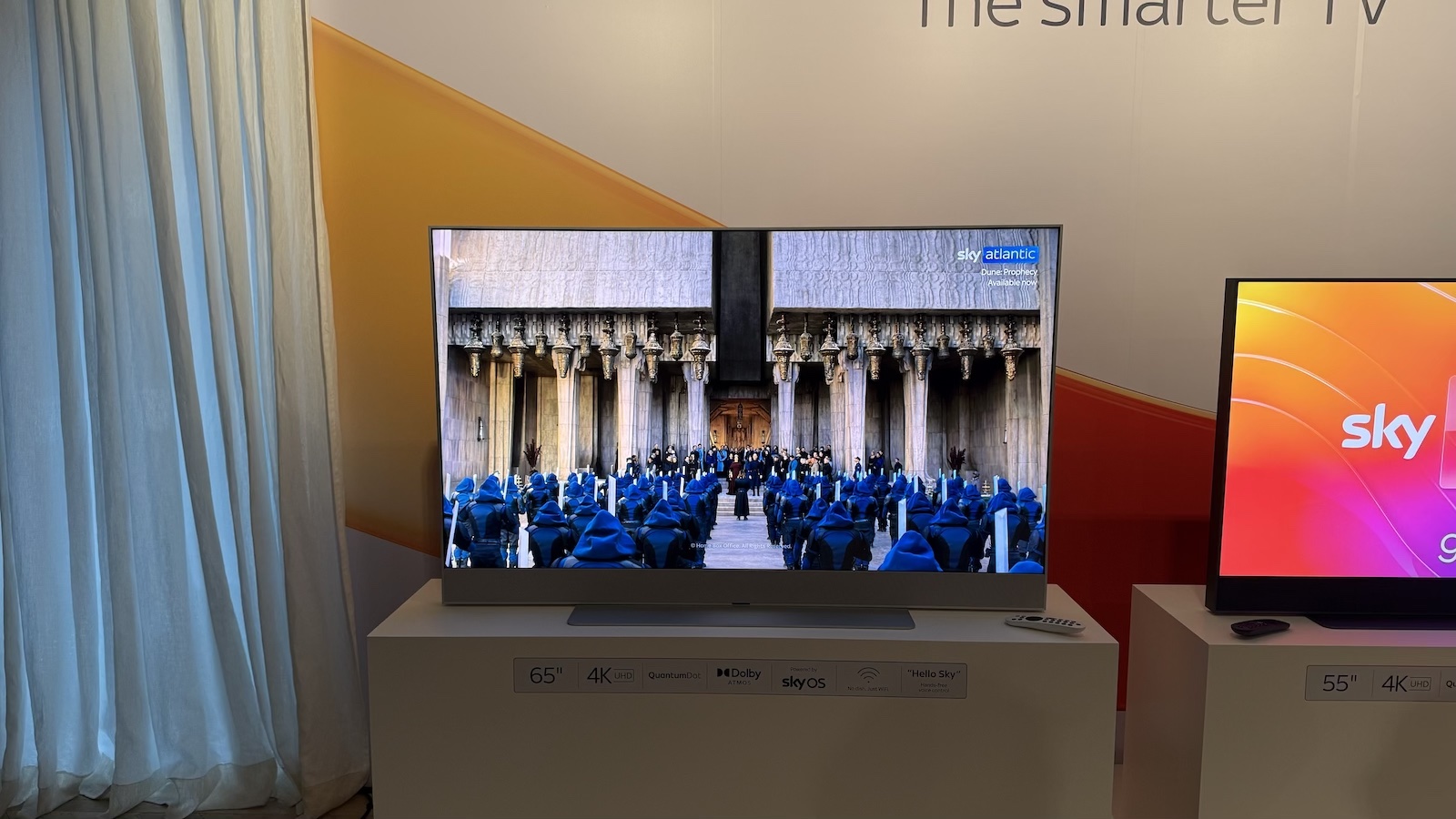
Sky has always sold its Glass TVs on their combination of simplicity and authenticity. The idea is that you can put the TV into its Auto picture preset and it will adapt to the type of content being played. Combine that with the ambient-light sensor and that content should also be adapted to the lighting conditions of the room in real time. Sky says these features have all been improved and re-optimised for the new hardware, but you can override the Auto mode and switch to a fixed picture preset if you prefer.
Sky kicked off its picture demos with a clip from John Wick: Chapter 4 – a bold choice given its heavy use of very dark and very bright picture elements. Unfortunately, the demo room was nowhere near dark enough to judge overall black depth or the TV’s control of blooming, but it did prove a good demonstration of the TV’s increased brightness, with the bright fluorescent bulbs popping against the dark background and punching through the ambient light in the room.
As you would hope with a Hollywood movie, the overall colour tone was warm, but skin tones looked balanced and natural.
Sky then switched to a clip from the Brentford v Tottenham Premier League match from 2nd February and the TV automatically switched to its Sport picture preset, which features, among other things, a cooler colour balance that is in keeping with how sport is filmed and broadcast. This looked great, and not just because I’m a Spurs fan and this was a rare away win – the player shirts popped in the unseasonal winter sun, the contrast between the brightly lit and shadowed parts of the pitch looked striking but natural, and motion looked crisp.
For the final picture demo, Sky decided to take the reins off the Glass Gen 2 and switch it from the Auto mode to the new Extra Vivid preset. As you would expect, this is super-bright and punchy, with additional colour vibrancy and sharpness. In truth, it actually looked quite good with the clip from Aquaman, with the CGI action leaping from the screen without the human characters looking terribly garish. It looks as though Sky has put some proper thought into the tuning of this mode and I can see it appealing to those who want their Hollywood action big and bold.
Sound
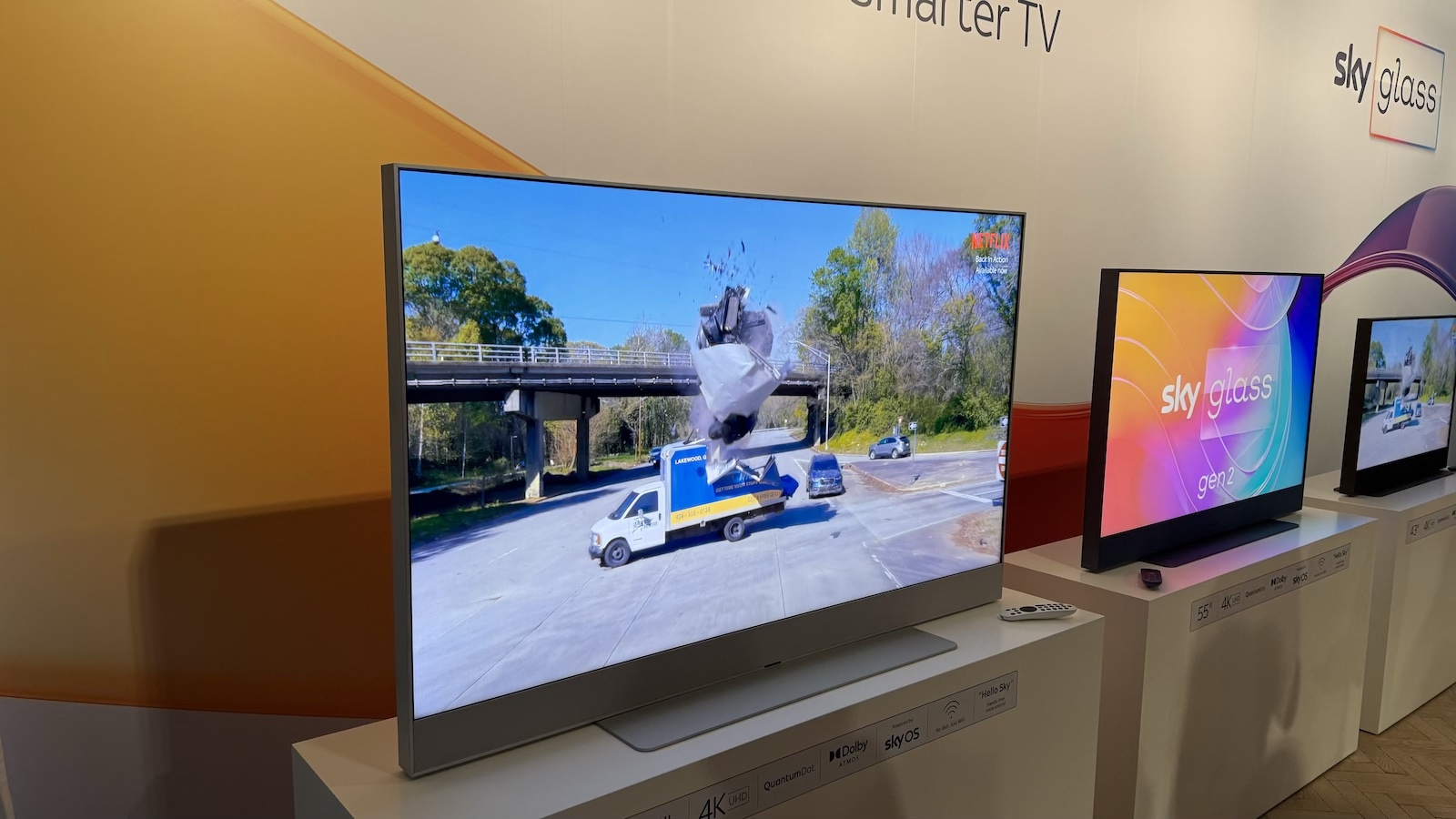
Sky is clearly very pleased with the Glass Gen 2’s new sound system which, as mentioned above, now features dedicated up- and wide-firing speakers, plus a heavily upgraded subwoofer. Unfortunately, though, the sound demonstration at the launch event was rather underwhelming.
In neither of the two clips played (Sky’s own Attenborough-fronted Secret World of Sound nature program and A Star is Born) did I get much of a sense of bassy weight or depth, or a sense of height. In fact, everything sounded a bit thin and two-dimensional.
I have little doubt that the demo room was having a big effect here, though. It was essentially a meeting room – far larger than a typical living room and with a false ceiling. Sky had attempted to compensate for the latter by building a ledge above the TV to help with sonic reflections from the up-firing drivers, but this didn’t appear to be doing the job from where I was sitting.
Dialogue was clear and direct and there was decent width to the delivery, but I’m not prepared to say much more about the sound of the Sky Glass Gen 2 until we’ve had it into our dedicated test rooms for a full review. I think (and hope) it will sound much better than it did at the launch event.
Verdict
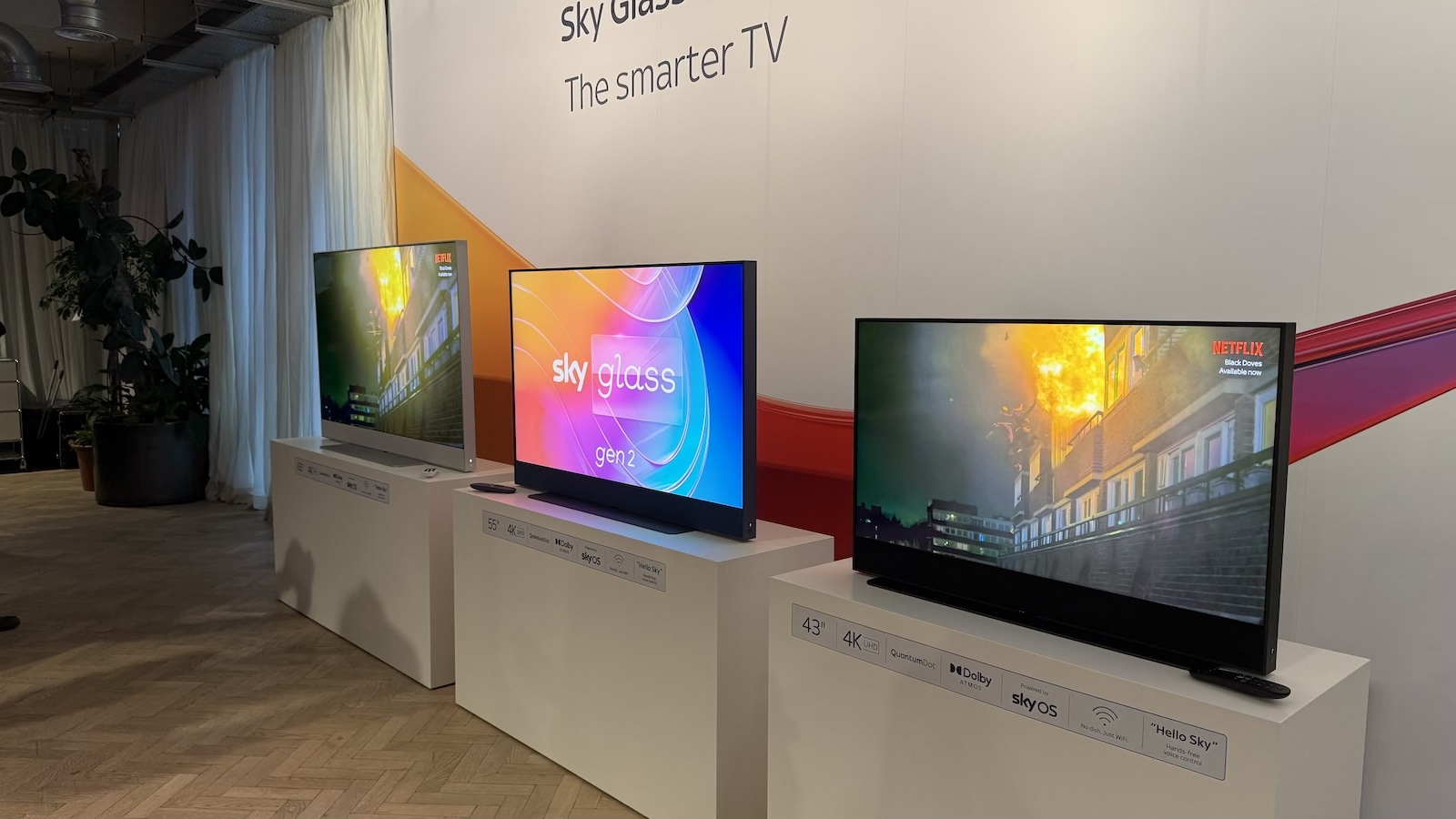
So, the jury is very much out on the sound quality of the Sky Glass Gen 2, and there’s much that I don’t know about the picture quality, particularly in terms of black depth and control of blooming.
Even so, I’m cautiously optimistic. The new model is clearly capable of going much brighter than the model it replaces and I’m fairly confident of its contrast improvements, too. At first glance, the picture presets, both fixed and automatic, also look better optimised, suggesting that this Gen 2 model could deliver in ways that the Gen 1 promised but didn’t quite reach.
So, all told, the new Sky Glass model looks promising, but we’ll need to get a sample into our test rooms for a comprehensive, comparative review before we deliver our final verdict. Stay tuned for that and more on Sky Glass Gen 2 as we get it.
MORE:
Sky says it's not after OLED TV buyers with Glass Gen 2 – and I think that's a mistake
Here are the best TVs you can buy right now
And these are the best TV deals
Tom Parsons has been writing about TV, AV and hi-fi products (not to mention plenty of other 'gadgets' and even cars) for over 15 years. He began his career as What Hi-Fi?'s Staff Writer and is now the TV and AV Editor. In between, he worked as Reviews Editor and then Deputy Editor at Stuff, and over the years has had his work featured in publications such as T3, The Telegraph and Louder. He's also appeared on BBC News, BBC World Service, BBC Radio 4 and Sky Swipe. In his spare time Tom is a runner and gamer.
What is a hands on review?
'Hands on reviews' are a journalist's first impressions of a piece of kit based on spending some time with it. It may be just a few moments, or a few hours. The important thing is we have been able to play with it ourselves and can give you some sense of what it's like to use, even if it's only an embryonic view.
